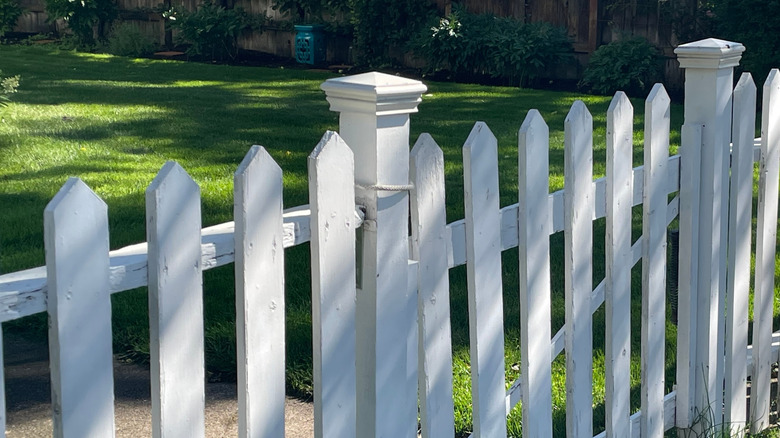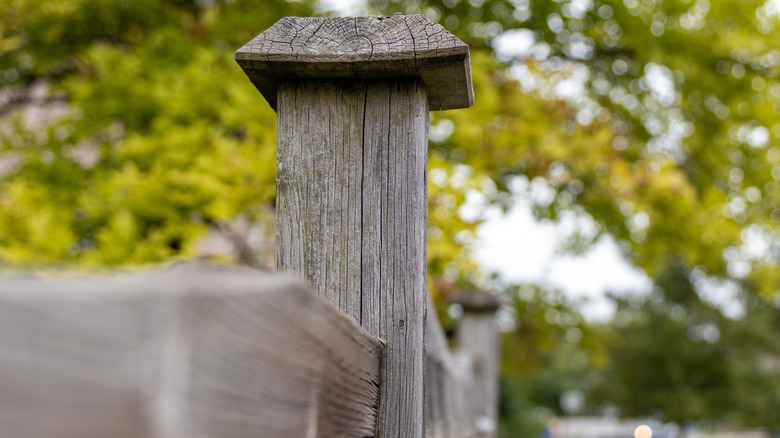Easily Secure A Fence Post Cap With These Helpful Tips
We may receive a commission on purchases made from links.
For a concept that seems fairly straightforward, fence post caps can be an amazingly convoluted topic. Is a stair railing a fence? Are stair balusters fence posts? Are capitals, finials, and caps all the same thing? But we can make this simple by defining our terms and a few ground rules. Attaching caps onto outdoor fence posts has the dual purpose of giving the posts a more finished look and protecting the post itself from water. Caps will tend to be the shape of the post itself. For example, a square post will be topped with a square cap, while round posts — rare outside of chain-link and livestock fencing — would use round caps.
Chain-link post caps fit easily into place, and livestock fencing doesn't typically require any caps. That leaves talking about installing square post caps, and there are only a few ways they'll reliably attach. Some manufacturers have systems that involve mounting rings or other proprietary gadgetry, but the most common methods of post cap installation by a mile are press-fit and glued-on caps. Commonly available post caps are made of durable and stylish fence materials like wood, vinyl, composite, plastic, aluminum, copper, stainless steel, and even glass and are available in 2x2, 4x4, 5.5x5.5, 5x5, and 6x6 sizes. Note that wood fence posts might have nominal sizes that don't reflect their actual dimensions. For example, 4x4 posts will actually measure to be 3 ⅝ by 3 ⅝ inches, and post caps, like these Suprom 8-pack Fence Post Caps, are made with this in mind.
Press-fitting and gluing caps
Press-fit caps are held in place by a variety of mechanisms, usually amounting to some level of friction. Installing these is usually as simple as centering the caps on the posts and then tapping them into place firmly but gently with a rubber mallet. One Fence Armor installation manual has a hilariously simple instruction manual that essentially illustrates the process of putting a cap onto a post. Press-fit caps are often held in place by barbs stamped out of the same material as the caps are made from. This stamping process can result in cut-out perforations in the sides of the caps that might look like holes for screws. Usually they're not, but consult your product's installation instructions to be sure.
The majority of exterior fence post caps are simply glued on. This is done, naturally, with an exterior-grade silicone or PVC adhesive. You'll typically apply a dab or bead of construction adhesive to the underside of the cap, then press the cap into place and allow the adhesive to cure. Wood caps for exterior posts are fairly uncommon today, but when you encounter them, they can also be secured with brad nails or pneumatic staples for extra security. Steer clear of driving full-size nails pneumatically. Always select the right type of nail gun for home improvement projects when wood or other materials can be split. Finally, follow the same tips for the perfect fence installation and care for the fence materials, such as properly sealing wood caps.

